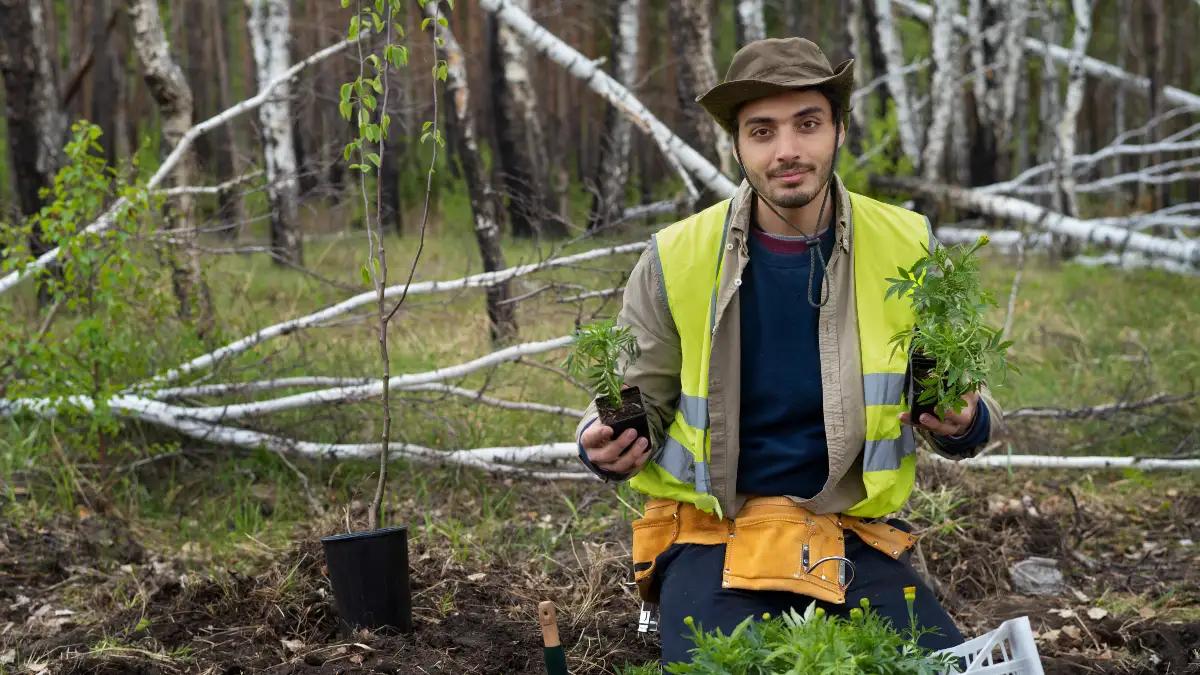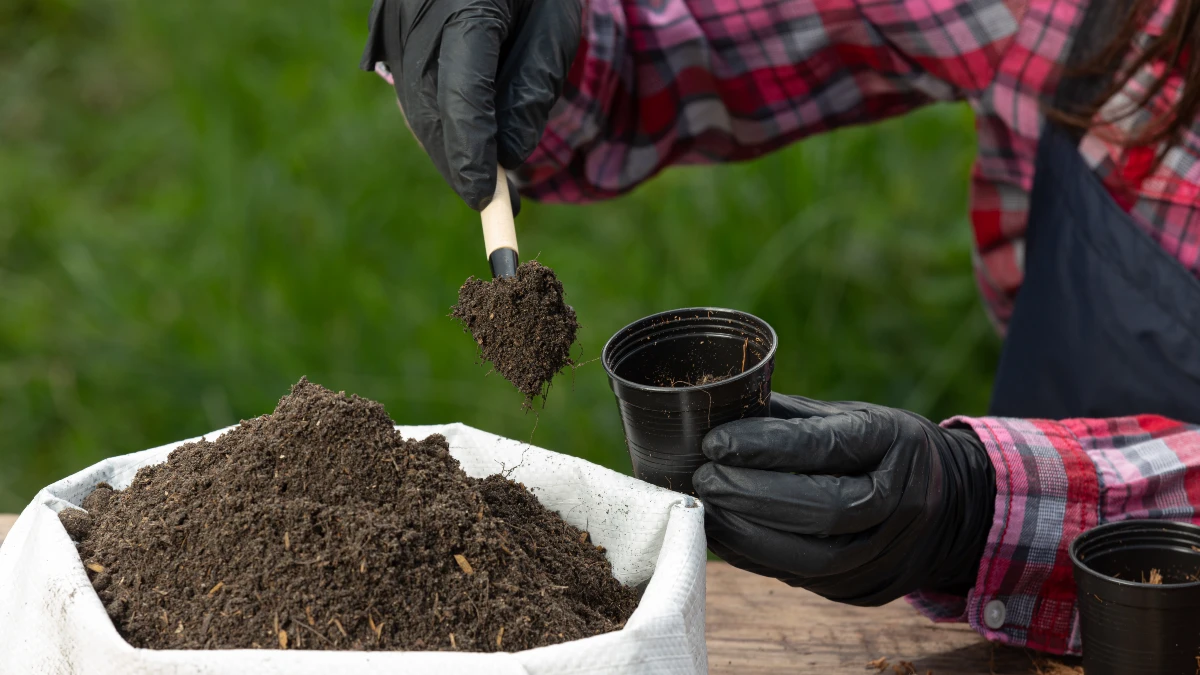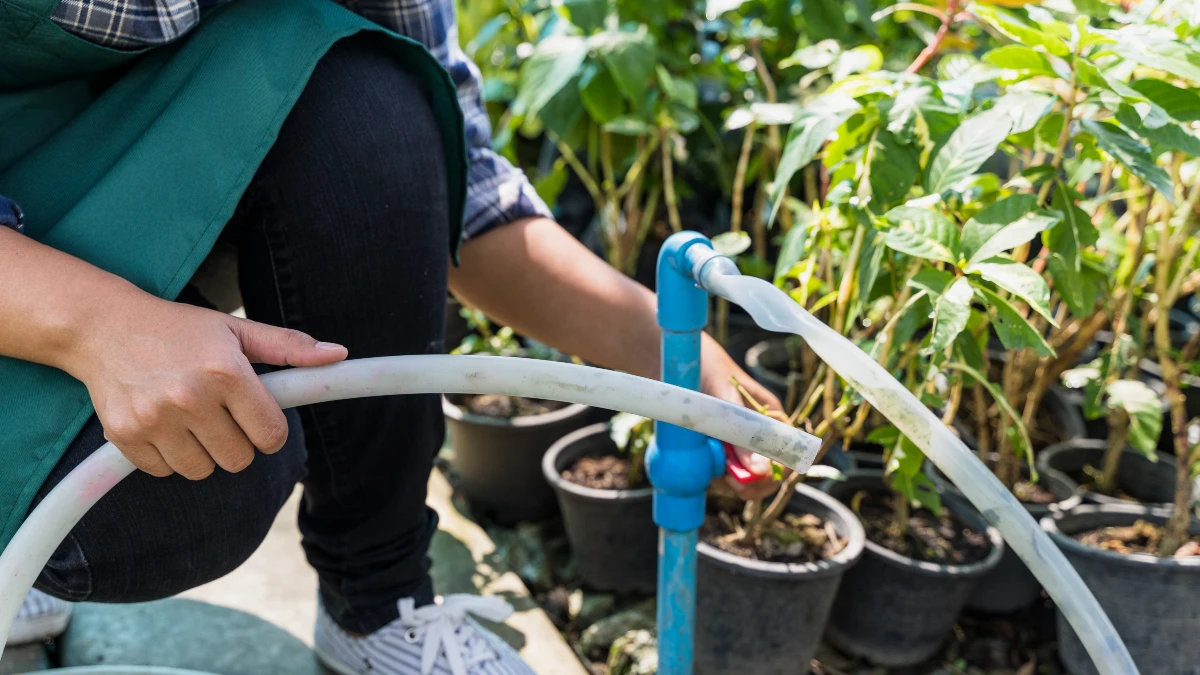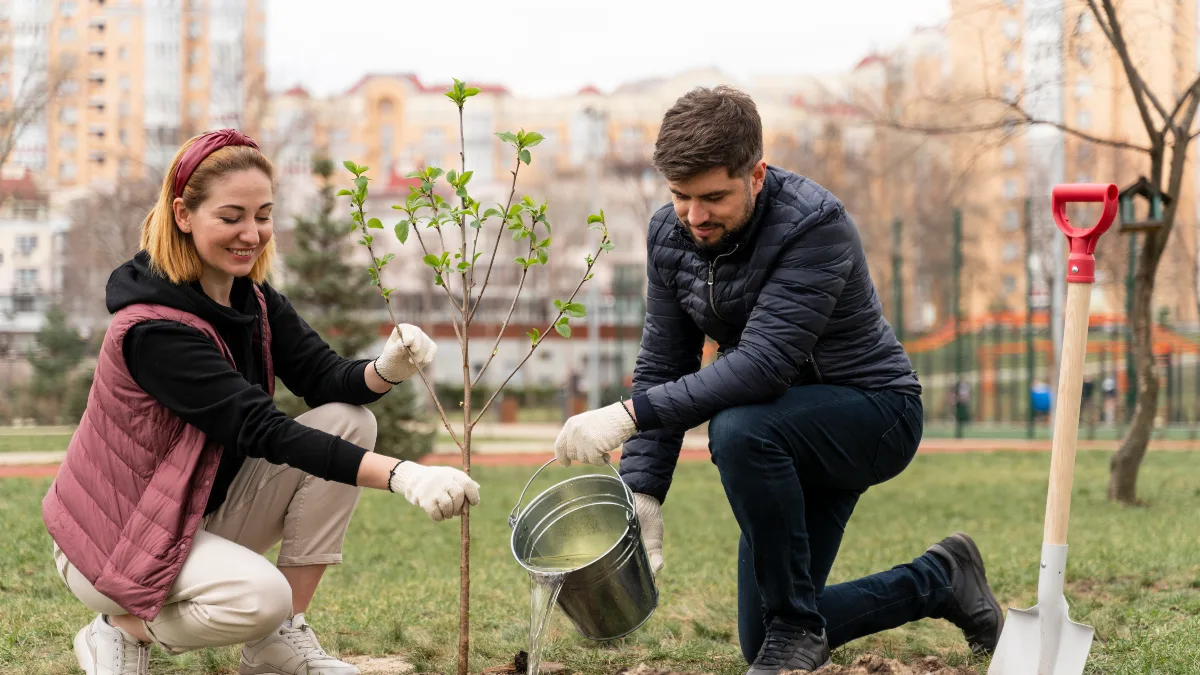As the vibrant colors of fall fade, a familiar question arises for every gardener: Have I done enough to protect my garden from the coming winter? The time, effort, and financial resources invested throughout the spring and summer face a significant threat from freezing temperatures, heavy snow, and damaging winds.
With the average home garden yielding approximately $600 worth of produce, this represents a substantial return on investment that is at risk without proper preparation.
This guide provides a definitive, actionable 14-point checklist for 2025, moving beyond outdated advice to detail methods that not only protect plants but also support a healthy garden ecosystem through the dormant season, ensuring a vibrant return in spring.
1. Conduct a “Smart” Cleanup (Don’t Tidy Too Much)

A significant trend in modern horticulture for 2025 involves a shift away from immaculate, “scorched earth” fall cleanups toward a more selective and ecologically beneficial approach. This method redefines a healthy winter garden not as a bare landscape, but as a functional ecosystem. The goal of fall cleanup is transformed from a purely aesthetic task to a crucial ecological one.
The primary focus of removal should be on diseased or pest-infested plant material. This is particularly critical in vegetable gardens, where pathogens can overwinter on debris and re-infect crops the following year. Plants from the nightshade family, such as tomatoes and peppers, are known for harboring diseases and should be cleared away completely.
Conversely, healthy perennial stems and seed heads should be left standing. Structures from plants like coneflowers (Echinacea), black-eyed Susans (Rudbeckia), and ornamental grasses serve a dual purpose. They provide architectural interest against a snowy backdrop and, more importantly, offer vital resources for wildlife. The seed heads become a natural food source for birds, while the hollow stems provide essential overwintering habitat for beneficial insects and native pollinators. As horticulturalist Carrie Spoonemore notes, “Leaving plant debris on the ground acts as natural mulch to prevent soil erosion and supports wildlife”. This practice is a cornerstone of the “Leave the Leaves” movement, which promotes a more sustainable and wildlife-friendly garden environment.
2. Master the Art of Mulching

Mulch is one of the most effective tools for winter garden protection, though its primary function is often misunderstood. Rather than providing warmth, mulch acts as an insulator, moderating the soil’s temperature. This is critical for preventing the damaging freeze-thaw cycles that can occur during winter. These cycles cause the soil to expand and contract, which can push shallow-rooted plants and bulbs out of the ground—a phenomenon known as “frost heaving”. Plant roots are significantly less hardy than stems and can die at temperatures below 10°F, making the insulation provided by mulch essential for their survival.
For optimal effectiveness, a 2- to 4-inch layer of organic mulch should be applied around the base of perennials, trees, and shrubs. David Hillock, an Oklahoma State University Cooperative Extension consumer horticulturist, recommends a “4-inch-deep layer of organic mulch” to provide the necessary insulation against cold damage. The ideal time for application is in late autumn after the ground has cooled but before it freezes solid.
The best mulching materials are organic and readily available. Fallen leaves, often referred to as “garden gold,” can be shredded by running a lawnmower over them, creating a nutrient-rich mulch that decomposes over time. Other excellent options include straw, pine needles, and leaf compost. A crucial step in application is to pull the mulch a few inches away from the base of tree trunks and the crowns of perennial plants. Piling mulch directly against plant tissue can trap moisture, leading to rot, and can also provide a sheltered environment for rodents to nest and feed on the bark over winter.
3. Fortify Your Soil with Compost and Cover Crops

Winter provides a strategic opportunity to build long-term soil health, a practice that aligns with the 2025 trend of moving away from synthetic fertilizers toward more sustainable solutions. Applying a layer of finished compost or well-aged manure in the fall allows organic matter to break down slowly over the winter months. This process enriches the soil with a stable source of nutrients that will be readily available to plants in the spring, improving soil structure and water retention.
For bare vegetable beds, sowing cover crops is a highly effective technique for winter soil management. Cold-hardy species such as winter rye, hairy vetch, or clover can be planted in the fall. These crops provide a triple benefit: their root systems hold the soil in place, preventing erosion from winter winds and rain; they act as a living mulch, suppressing the growth of winter weeds; and they add significant organic matter and, in the case of legumes like clover and vetch, fix atmospheric nitrogen into the soil. In the spring, the cover crop is simply tilled into the garden, where it decomposes and releases its stored nutrients for the upcoming season’s vegetables.
4. Drain and Store Irrigation Systems and Tools

One of the most practical and financially prudent winterizing tasks is the proper care of irrigation equipment. Water left inside hoses, irrigation lines, nozzles, or watering wands will freeze and expand, inevitably leading to cracks and ruptures that necessitate costly repairs or replacements in the spring.
A systematic approach ensures all components are protected. The process should include:
- Disconnecting all hoses from outdoor spigots and shutting off any interior water supply valves to those spigots.
- Removing all attachments, such as spray nozzles and watering wands.
- Draining hoses completely by uncoiling them and laying them on a downward slope to allow gravity to pull all remaining water out.
- For in-ground sprinkler systems, it is critical to have the lines “blown out” with an air compressor to purge all water. This is often a task best left to a professional irrigation service.
- Storing all drained equipment in a dry, protected location like a garage or shed.
This is also the ideal time to perform annual maintenance on garden tools. Cleaning soil off shovels and trowels, sharpening the blades of pruners and loppers, and applying a light coat of oil to metal parts will prevent rust and ensure they are in optimal condition for the start of the next gardening season.
5. Water Wisely Before and During Winter

The practice of watering plants before a freeze may seem counterintuitive, but it is a scientifically sound method of protection. Moist soil can absorb and hold significantly more solar heat during the day than dry soil—up to four times as much. This stored heat radiates slowly from the ground overnight, warming the air immediately around the plants and protecting their root systems from damage.
This principle is especially critical for evergreen plants, including both broadleaf varieties like rhododendrons and conifers like arborvitae. Evergreens continue to lose moisture through their leaves or needles via transpiration throughout the winter, a process that accelerates on dry, windy days. If the ground is frozen solid, the plant’s roots are unable to absorb water to replace what is lost, leading to a condition of severe dehydration known as “winter burn” or desiccation. A plant that enters the winter season already suffering from drought stress from a dry fall is significantly more vulnerable to this type of injury.
Therefore, a crucial part of winter preparation is to water plants deeply and thoroughly in the autumn until the ground freezes. During the winter itself, it is beneficial to provide supplemental water during any prolonged mild spells when the air temperature rises above 40°F (4°C) and the soil has thawed. Water should be applied mid-day to allow it to soak in before temperatures drop again at night.
6. Use Frost Cloths and Covers Correctly

When a frost or light freeze is forecast, covering vulnerable plants is an effective way to extend the growing season or protect tender perennials. These covers do not generate heat themselves; rather, they function by trapping the radiant heat that escapes from the soil surface at night. For this reason, it is essential that the covering extends all the way to the ground, creating a pocket of warmer air around the plant.
The choice of material is important. Commercial frost cloths (also known as row covers), old bedsheets, burlap, or lightweight blankets are all suitable options. However, plastic sheeting should be avoided if it will come into direct contact with foliage. Plastic is a poor insulator and will transfer cold directly to the leaves, often causing more damage than no cover at all.
Proper technique maximizes the effectiveness of any cover. It is best to use stakes, tomato cages, or other frames to create a tent-like structure that keeps the material from resting directly on the plants, which can cause physical damage and reduce the insulating air gap. Covers should be put in place before sunset to capture the day’s accumulated warmth in the soil. They must then be removed the following morning as temperatures rise above freezing to allow for proper air circulation and to prevent the plants from overheating in the sun. To prioritize which plants to cover, gardeners can refer to a hardiness guide.
Table 1: Plant Hardiness to Cold Temperatures
| Crop/Plant | Hardiness Category | Critical Damage Temperature (°F) | Notes |
| Tomato, Pepper, Cucumber, Beans, Squash | Tender | 28 – 32°F | Killed or severely damaged by a light frost. |
| Broccoli, Cabbage, Carrot, Cauliflower, Lettuce | Frost Tolerant | 28 – 32°F | Can withstand light frosts with minimal injury. |
| Kale, Spinach, Collards, Brussels Sprouts | Very Hardy | < 28°F | Can withstand hard frosts and freezing temperatures for short periods. |
7. Protect Tree Trunks from Sunscald and Animals

Young, thin-barked trees such as maples, lindens, and fruit trees are susceptible to two distinct forms of trunk damage in winter: sunscald and animal activity.
Sunscald occurs on bright, sunny winter days when the low-angled sun warms the southern or southwestern side of a tree’s trunk. This warmth can cause the dormant cells in the bark to become active. When the sun is suddenly obscured by a cloud or sets, the bark temperature plummets rapidly, freezing and killing the activated tissue. This results in discolored, sunken areas of bark that can crack and peel away, leaving the tree vulnerable to pests and diseases. To prevent sunscald, the trunks of susceptible young trees should be wrapped from the base up to the first set of branches using commercial paper tree wrap or plastic tree guards. The wrap should be removed in the spring to allow for trunk growth.
As other food sources become scarce in winter, animals like rabbits, voles, and mice often turn to chewing on the nutrient-rich bark of trees and shrubs, which can girdle and kill the plant. Protection involves creating a physical barrier around the trunk. A cylinder of hardware cloth (wire mesh) or a hard plastic tree guard is effective. The guard should be buried an inch or two into the soil to prevent rodents from tunneling underneath and must be tall enough to extend above the anticipated maximum snow depth to protect against rabbits.
8. Safeguard Container Gardens

Plants grown in containers are significantly more vulnerable to winter cold than their in-ground counterparts. Their root systems are exposed to freezing air temperatures from all sides, top, and bottom, whereas the earth provides substantial insulation to plants in the garden bed. A survey conducted by the Royal Horticultural Society after a particularly harsh winter confirmed this vulnerability, noting significant losses among containerized plants while identical plants in the ground survived.
Several methods can be employed to protect container gardens:
- Relocation: The most effective method is to move pots into an unheated but protected location, such as a garage, shed, or cold frame, where they are shielded from wind and extreme temperature fluctuations.
- Grouping: If pots cannot be moved indoors, grouping them together in a sheltered spot, such as against the wall of a house, can create a warmer microclimate and reduce the surface area exposed to cold winds.
- Insulation: Individual pots can be wrapped in insulating materials like bubble wrap or burlap. Another effective technique is to “heel in” the pots by temporarily burying them in the ground or piling a thick layer of leaves or straw around them to insulate the root zone.
The choice of container material also plays a role. Porous materials like terracotta are prone to absorbing water, freezing, and cracking. Using frost-resistant containers made of plastic, fiberglass, or metal is advisable. Additionally, raising pots onto “feet” or bricks ensures good drainage and prevents them from freezing to the patio or deck surface.
9. Manage Heavy Snow and Ice Loads

While a fluffy layer of snow can act as an excellent insulator for plants at ground level, heavy, wet snow poses a significant physical threat. The weight can bend and break the branches of trees and shrubs, with multi-stemmed, upright evergreens like arborvitae and junipers being particularly susceptible to splaying and damage.
A proactive measure before a major snowstorm is to gently bundle the branches of vulnerable shrubs together with soft twine or fabric strips. This creates a more compact, sturdy form that is better able to shed snow and resist the weight.
After a snowfall, heavy accumulation should be removed from branches. This must be done gently, using a broom in a soft, upward sweeping motion to lift the snow off rather than pushing down on the branch. It is critical to never shake branches to dislodge snow or ice. Frozen wood is brittle and shaking can easily cause it to snap. Similarly, one should never attempt to remove ice from branches. The ice itself is less damaging than the aggressive actions required to remove it; it is always best to let ice melt naturally as temperatures rise.
10. Avoid Harmful Deicing Salts

The use of conventional deicing salts, typically sodium chloride, presents a hidden but serious danger to roadside and driveway plantings. The damage occurs through two primary pathways. First, salt-laden spray kicked up by passing vehicles coats the foliage and stems of nearby plants, where it can be absorbed and cause tissue damage. Second, as snow and ice melt, the salt dissolves and is carried into the soil via runoff, where it can accumulate to toxic levels, causing root injury and interfering with the plant’s ability to absorb water and essential nutrients.
To mitigate this damage, gardeners should opt for safer alternatives. Sand or non-clumping kitty litter can be used to provide traction on icy surfaces without chemical harm. There are also a variety of deicing products available that are formulated to be less harmful to plants and pets, such as those containing calcium magnesium acetate (CMA). It is important to read product labels carefully to find “plant-safe” options.
For plants in high-risk areas, a physical barrier can be effective. Installing a temporary fence of burlap or plastic sheeting along the edge of a driveway or road can block the majority of salt spray from reaching sensitive shrubs and perennials.
11. Leave Stems and Create a “Bug Hotel”

Beyond leaving seed heads for birds, the hollow stems of perennials like sunflowers, Joe-Pye weed, and bee balm serve as critical overwintering sites for the larvae of native bees and other beneficial insects. Cutting these stems back in the fall destroys this vital habitat. Instead of a complete cleanup, a “chop and drop” method can be used for healthy plant material. This involves simply cutting the material into smaller pieces and letting it fall in place, where it acts as a natural mulch that decomposes over time, returning nutrients to the soil in a process that mimics nature’s own cycle.
To further enhance habitat, gardeners can create a small brush pile in an out-of-the-way corner of the yard using fallen twigs, pruned branches, and other woody debris. This structure, sometimes called a “bug snug” or a “little hotel,” provides essential shelter from the cold and predators for a wide array of wildlife, including beneficial insects, spiders, amphibians, and small mammals.
12. Stop Pruning at the Right Time

One of the most common and detrimental winterizing mistakes is pruning trees and shrubs too late in the fall. Pruning stimulates a plant to produce new growth. If this is done in late autumn, the resulting new shoots are tender and have insufficient time to “harden off”—a physiological process of preparing for cold temperatures. This vulnerable new growth is inevitably killed by the first hard frost, which not only damages the plant but also wastes the valuable energy reserves it expended to produce that growth.
As a general rule, most structural pruning of deciduous trees and shrubs should be delayed until they are fully dormant in late winter, typically February or early March, just before new spring growth begins. At this time, the plant’s structure is clearly visible, and pruning cuts will heal quickly as growth resumes. The only exception to this rule is the removal of dead, damaged, or diseased wood, which can and should be done at any time of year to maintain plant health and safety.
13. Plant Spring-Blooming Bulbs

The act of planting bulbs in the fall is an investment in the future, a task of hope that promises a vibrant display of color to mark the end of winter. Spring-blooming bulbs such as daffodils, tulips, crocuses, and hyacinths require a period of cold dormancy to trigger flowering, making autumn the essential planting season.
The process is straightforward: bulbs should be planted before the ground freezes, typically at a depth two to three times their own height. After planting, they should be watered well to help settle the soil and encourage initial root growth before winter sets in. This simple act not only ensures a beautiful spring garden but also supports the local ecosystem, as the early blooms of crocuses and other minor bulbs provide a critical first source of nectar and pollen for queen bees emerging from hibernation.
14. Plan Your 2026 Garden

Winter, often seen as a period of inactivity, is in fact the ideal time for reflection and strategic planning. With the garden’s structure laid bare, a gardener can “see your garden naked and strategize,” gaining a unique perspective on its design and layout that is impossible when it is full of foliage. This downtime should be used for forward-looking activities that set the stage for a successful season ahead.
Actionable planning tasks for the winter months include:
- Reviewing journals and notes from the previous season to assess what worked well and what could be improved.
- Sketching out designs for new garden beds or renovations to existing ones.
- Ordering seed catalogs and placing seed orders early to ensure the best selection of desired varieties.
This process transforms the act of winterizing from a purely defensive chore into a period of strategic opportunity. It is the time when a gardener can make the most impactful, long-term improvements to their garden’s health, productivity, and beauty for the following year and beyond.


